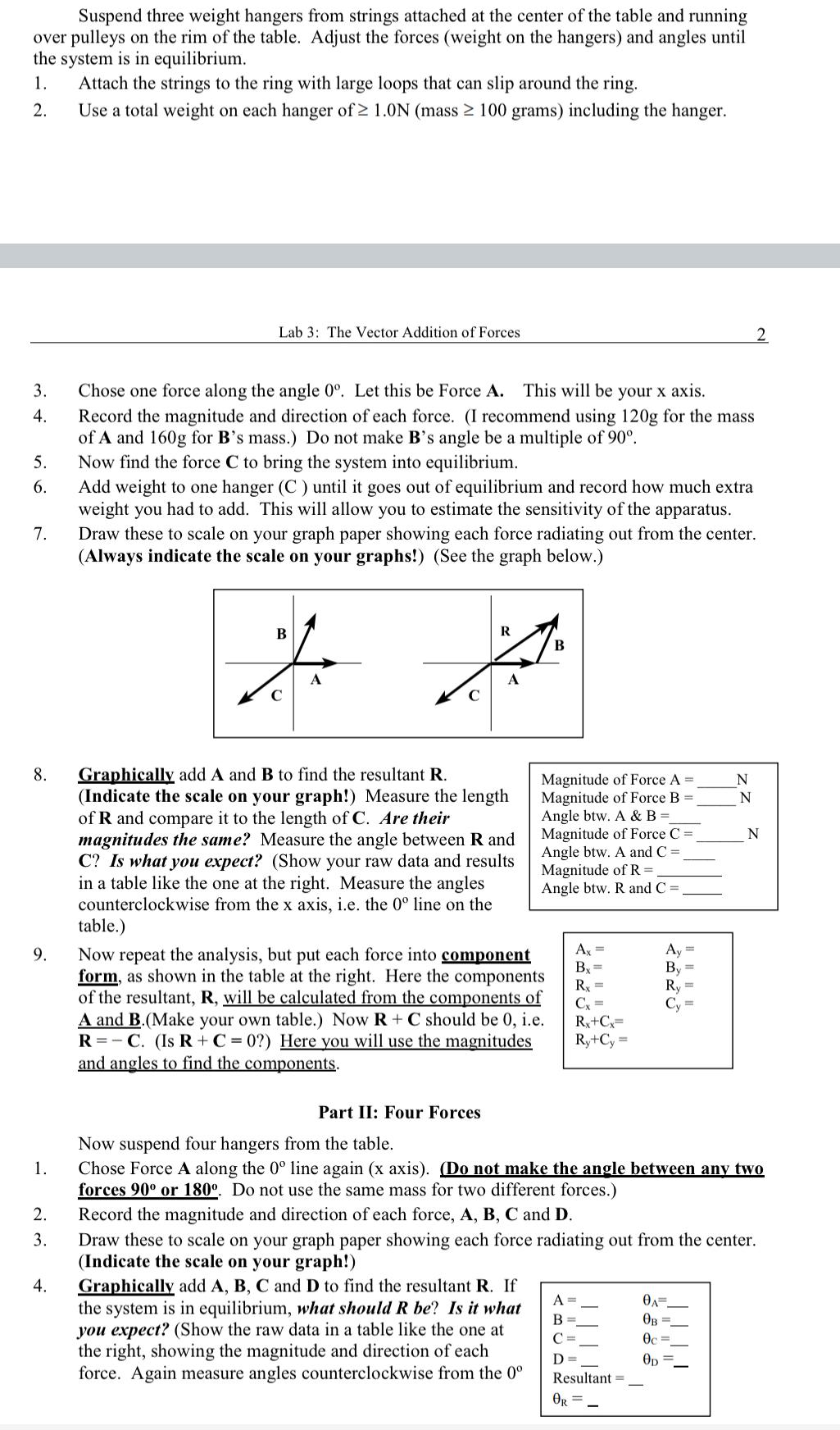Answered step by step
Verified Expert Solution
Question
1 Approved Answer
Suspend three weight hangers from strings attached at the center of the table and running over pulleys on the rim of the table. Adjust

Suspend three weight hangers from strings attached at the center of the table and running over pulleys on the rim of the table. Adjust the forces (weight on the hangers) and angles until the system is in equilibrium. 1. 2. Attach the strings to the ring with large loops that can slip around the ring. Use a total weight on each hanger of 1.0N (mass 100 grams) including the hanger. Lab 3: The Vector Addition of Forces 3. 4. Chose one force along the angle 0. Let this be Force A. This will be your x axis. Record the magnitude and direction of each force. (I recommend using 120g for the mass of A and 160g for B's mass.) Do not make B's angle be a multiple of 90. 5. Now find the force C to bring the system into equilibrium. 6. 7. Add weight to one hanger (C) until it goes out of equilibrium and record how much extra weight you had to add. This will allow you to estimate the sensitivity of the apparatus. Draw these to scale on your graph paper showing each force radiating out from the center. (Always indicate the scale on your graphs!) (See the graph below.) B C A R B A 8. 9. Graphically add A and B to find the resultant R. (Indicate the scale on your graph!) Measure the length of R and compare it to the length of C. Are their magnitudes the same? Measure the angle between R and C? Is what you expect? (Show your raw data and results in a table like the one at the right. Measure the angles counterclockwise from the x axis, i.e. the 0 line on the table.) Now repeat the analysis, but put each force into component form, as shown in the table at the right. Here the components of the resultant, R, will be calculated from the components of A and B.(Make your own table.) Now R+C should be 0, i.e. R= C. (Is R+C=0?) Here you will use the magnitudes and angles to find the components. Magnitude of Force A = Magnitude of Force B Angle btw. A & B = Magnitude of Force C = Angle btw. A and C = Magnitude of R = Angle btw. R and C = Ax= Bx= Ay By = Rx = Ry Cx = Rx+Cx= Ry+Cy= Part II: Four Forces Now suspend four hangers from the table. N N N 2 1. Chose Force A along the 0 line again (x axis). (Do not make the angle between any two forces 90 or 180. Do not use the same mass for two different forces.) 2. Record the magnitude and direction of each force, A, B, C and D. 3. 4. Draw these to scale on your graph paper showing each force radiating out from the center. (Indicate the scale on your graph!) Graphically add A, B, C and D to find the resultant R. If the system is in equilibrium, what should R be? Is it what you expect? (Show the raw data in a table like the one at the right, showing the magnitude and direction of each force. Again measure angles counterclockwise from the 0 A = OA= B OB = C= D= 0p =. Resultant OR=
Step by Step Solution
There are 3 Steps involved in it
Step: 1

Get Instant Access to Expert-Tailored Solutions
See step-by-step solutions with expert insights and AI powered tools for academic success
Step: 2

Step: 3

Ace Your Homework with AI
Get the answers you need in no time with our AI-driven, step-by-step assistance
Get Started


